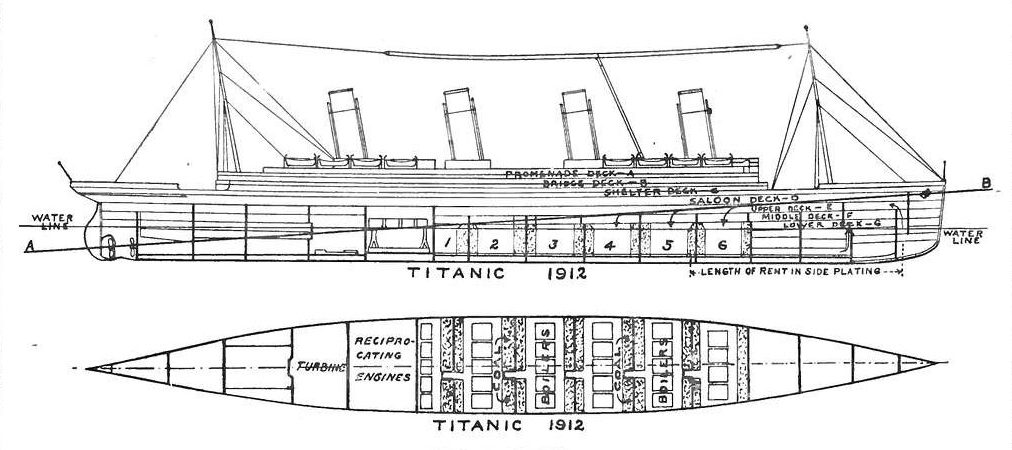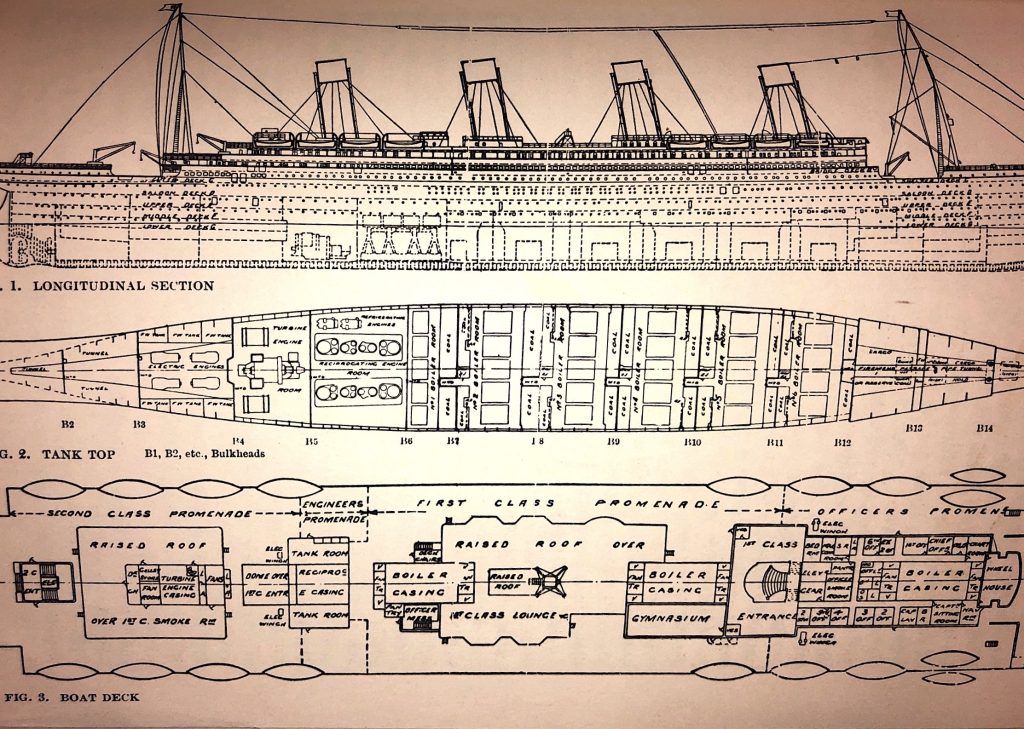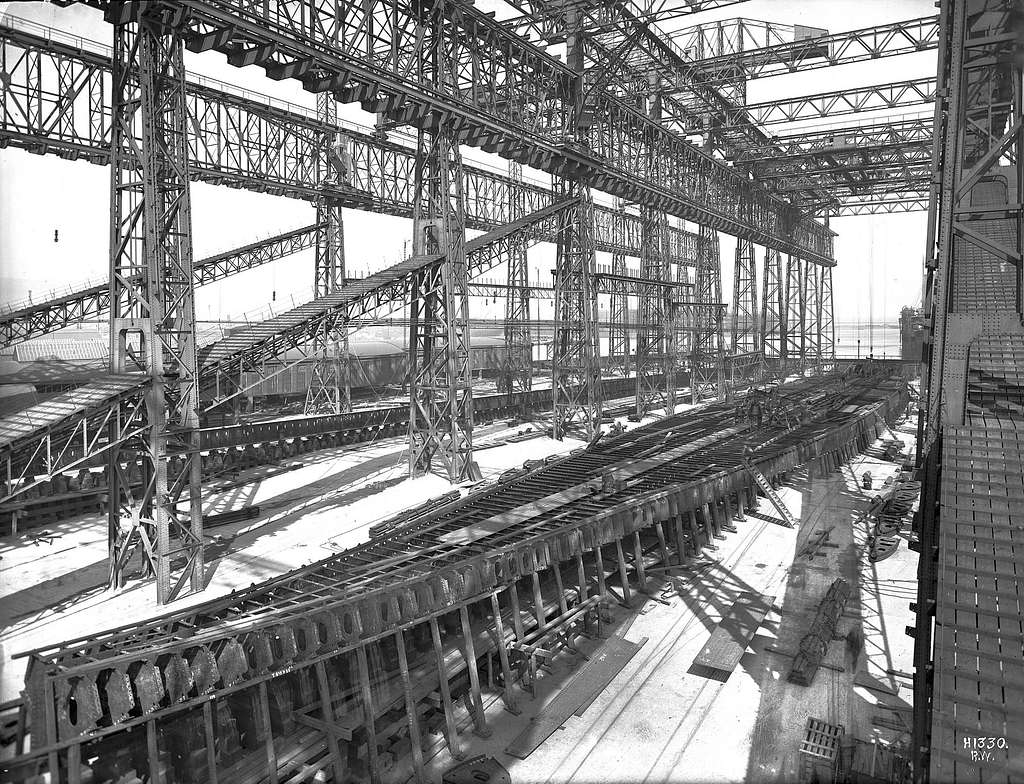The story of the RMS Titanic is a tale of ambition and collaboration set against the backdrop of Belfast, Ireland. This historic vessel was the product of a partnership between the White Star Line and Harland and Wolff, the renowned shipbuilders of the time. Their exclusive agreement meant that only Harland and Wolff could bring to life the White Star Line’s grand visions, turning Belfast into the birthplace of the iconic Titanic.
The construction of this colossal ship flourished in the heart of bustling Belfast, marked by the echoes of hammering steel and diligent workers. In the midst of a humming building site where the Titanic was slowly taking shape, it stood as more than just another ship. An epitome of human creativity, embodying hopes and dreams from a period dedicated to excellence in nautical history–a tribute not only to navigational prowess but also to grandeur.
In the bustling shipyards of Belfast, skilled craftsmen worked tirelessly with Harland and Wolff to build the Titanic – a symbol of ambition, luxury, and extraordinary human endeavor. Their collaboration with White Star Line resulted in a narrative that was forever etched into the pages of history.
Conception and Genesis

The birth of the Titanic and her sister ships, Olympic and Britannic, originated from an important discussion in 1907 between J. Bruce Ismay, chairman of the White Star Line, and the influential American financier J.P. Morgan. Faced with growing competition from rival companies like Cunard and German liners, Ismay envisioned a bold future. Instead of racing for speed, he aimed to surpass their competitors in size, opulence, and comfort.
During the early 1900s, the White Star Line, seen as the underdog to Cunard, aspired to dominate the prosperous route between Europe’s refined ports and the flourishing United States. The year 1907 saw Cunard’s Lusitania reigning as the largest and fastest liner, which didn’t sit well with J. Bruce Ismay. Head of the White Star Lines, Ismay took the initiative to commission not one but three grand ships, designed to surpass the Lusitania and its larger, unfinished counterpart, the Mauretania.
Collaborative Design and Construction

The construction of these massive vessels was entrusted to Harland & Wolff, a reputable shipbuilder in Belfast, Ireland. With a long-established relationship dating back to the late 1800s, the White Star Line granted considerable freedom to the designers, led by Lord Pirrie, Thomas Andrews, Edward Wilding, and Alexander Carlisle.
A significant sum—£3 million for the first two ships, accounting for an approximate £310 million in today’s value—was allocated for their construction. This budget, coupled with a five percent profit margin, allowed Harland & Wolff to focus on quality and innovation rather than stringent cost concerns.
In 1912, the Bishop of Winchester delivered a sermon in Southampton, remarking, “Titanic, name and thing, will stand as a monument and warning to human presumption.” These words encapsulated the grandeur and the poignant reminder that the Titanic’s creation, ambitions, and tragic outcome would forever stand as a symbol of both human innovation and the limitations that accompany it.
Design and Approval

The meticulous design process involved several key players, with responsibilities ranging from the ship’s general concept to its decorations and life-saving equipment. Lord Pirrie, overseeing both Harland & Wolff and the White Star Line, ensured a seamless collaboration. Thomas Andrews, Edward Wilding, and Alexander Carlisle worked on the technical and aesthetic aspects, ensuring an efficient, elegant, and safe design.
Upon the completion of the drawings in July 1908, J. Bruce Ismay gave his approval to the design. The first ship, initially referred to as “Number 400,” eventually named Olympic, became the basis for Titanic’s revised version, designated as “Number 401.”
The name “Titanic” the second of the three Olympic-class ocean liners held deeper significance than a mere choice of nomenclature. Deriving its name from the Titans of Greek mythology, the White Star Line intended to convey a sense of strength, size, and immensity. In Greek mythology, the Titans were known for their colossal and powerful nature, a befitting association for a vessel that was to be one of the largest and most opulent of its time.
The decision to name the ship Titanic was symbolic, aiming to reflect the scale and grandeur that the White Star Line sought to achieve. The association with the mythological Titans emphasized the ambition to create a ship that would be unparalleled in size, luxury, and grandiosity. This choice of name was a deliberate nod to the extraordinary scale and strength of the vessel, signifying its dominance among the maritime giants of its era.
Regarding the ship’s design, J. Bruce Ismay, the Director of the White Star Line, expressed his firm stance during the planning phase, stating, “Control your Irish passions, Thomas. Your uncle here tells me you proposed 64 lifeboats and he had to pull your arm to get you down to 32. Now, I will remind you just as I reminded him these are my ships. And, according to our contract, I have final say on the design. I’ll not have so many little boats, as you call them, cluttering up my decks and putting fear into my passengers.” – J. Bruce Ismay.
Ismay’s statement was made during the ship’s design process. His decision to limit the number of lifeboats, differing from Thomas Andrews’ proposal, revealed a consideration for both aesthetics and passenger comfort, aiming to balance safety measures with the ship’s overall presentation. Here you go: His relentless pursuit of grandeur had blinded him to the importance of safety.
Commencement and Legacy
With Ismay’s consent and the signing of agreements, construction began, marking the start of a monumental endeavor that would eventually lead to the creation of one of the world’s most opulent and iconic vessels, the RMS Titanic.
The RMS Titanic, a marvel of early 20th-century engineering, boasted grand dimensions and a complex layout that catered to the needs of its varied passenger classes and crew. Here’s an overview of its dimensions and the layout of the decks:

Dimensions:
Length: 882 feet 9 inches (269.06 meters)
Maximum Breadth: 92 feet 6 inches (28.19 meters)
Total Height (from keel to bridge top): 104 feet (32 meters)
Gross Register Tonnage (GRT): 46,329 tons
Net Register Tonnage (NRT): 21,831 tons
Draught: 34 feet 7 inches (10.54 meters)
Displacement: 52,310 tons
Significance of Decks:

The Titanic’s decks were organized to cater to the various classes of passengers while also providing spaces for leisure, entertainment, and essential services. The ship’s layout reflected the social stratification of the time, segregating the accommodations and amenities based on the passengers’ class. The upper decks were dedicated to First Class luxury, while the lower decks housed the more economical and utilitarian spaces for Second and Third Class passengers, along with crew quarters.
This comprehensive layout speaks to the grandeur and complexity of the Titanic, designed not only for its sheer size but also to offer a diverse array of experiences for its passengers, each deck holding its own significance in the hierarchy of the ship’s structure.
The Construction Marvel of the RMS Titanic

Pioneering Challenges in Shipbuilding
The birth of the RMS Titanic, along with its sister ship, Olympic, marked a pioneering endeavor in ship construction undertaken by Harland and Wolff in Belfast Harbour. The sheer magnitude of this undertaking was unprecedented, leading to the need to innovate and adapt to construct vessels of an entirely new scale.
Engineering Marvels and Construction Process
Harland and Wolff’s construction process involved the laying of keels for both ships almost concurrently, using an innovative design similar to an enormous floating box girder. The hull was assembled with thousands of steel plates and millions of rivets. However, safety precautions were not given much importance, resulting in numerous injuries and tragic fatalities among the workforce. It’s been reported that eight workers lost their lives while working on building the Titanic.
Launch and Fitting-Out of the Titanic
The grand RMS Titanic was launched in May 1911 without any fanfare or celebration, in accordance with the White Star Line’s tradition. Following the launch, the ship underwent a meticulous fitting-out process, where its engines, funnels, and interior features were installed. Alterations were made, distinguishing Titanic from its sister ship and emphasizing opulence and enhanced spaces for its passengers.
Trials at Sea: Evaluating the Titanic’s Prowess
Just days before its maiden voyage, the Titanic underwent rigorous sea trials. These tests assessed the ship’s maneuverability, speed, and overall handling in various conditions, confirming its worthiness at sea.
Arrival at Southampton: The Prelude to History
The RMS Titanic reached Southampton in April 1912, preparing for its maiden voyage. The stage was set for what would become an iconic chapter in maritime history, filled with hope, ambition, and, tragically, unforeseen disaster.











